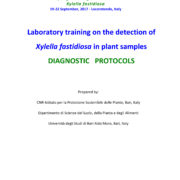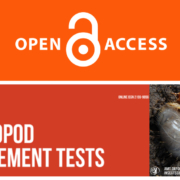Xylella fastidiosa, a new plant pathogen that threatens global farming: Ecology, molecular biology, search for remedies
Resis Srl, Via Ivrea, 8/1, 10010, Samone (TO), Italy
Abstract
Recently, the emergence of an important alien plant pathogen in Europe was evident when the Olive Quick Decline Syndrome (OQDS), a previously unknown disease causing rapid scorching and death of the trees, invested with particular virulence a substantial portion of the vast olive wood of Southern Italy (Salento, part of the Apulia region). Early evidence indicated a connection between the OQDS and the gram-negative bacterium Xylella fastidiosa. This bacterium can target several important crops, so that researchers from all over the world have investigated its association with host plants and vectors, the molecular biology of the infection mechanism, and the molecular reaction of the infected plants. Potentially resistant or tolerant cultivars and molecular targets which might be useful to control the infection have been identified. In vitro tests of compounds active against Xylella have also been performed. In this contribution, the literature and the available data will be reviewed to provide an up-to-date picture of the currently available knowledge on the role of Xylella in OQDS, and in diseases of other plants, with focus on the emerging threats to European farming.
Published on June 7, 2018 by BIOCHEMICAL AND BIOPHYSICAL RESEARCH COMMUNICATIONS










